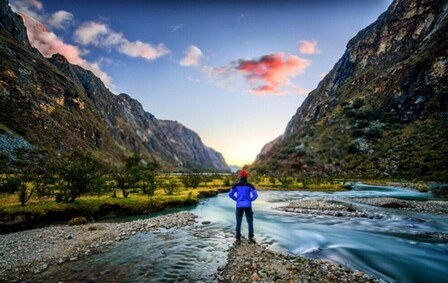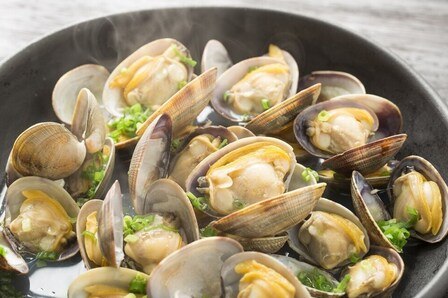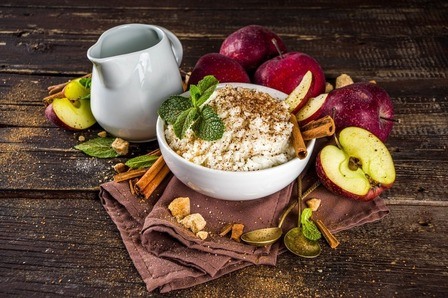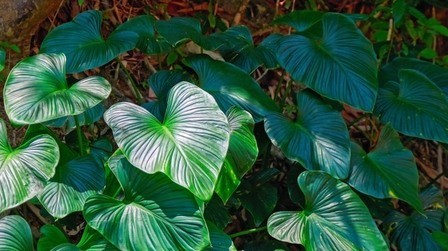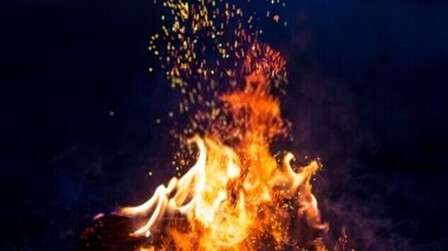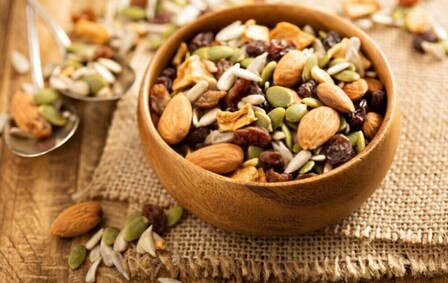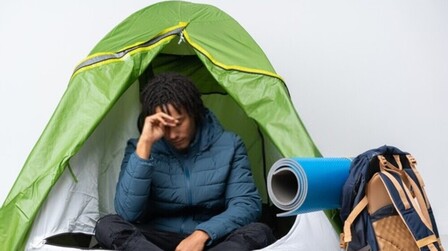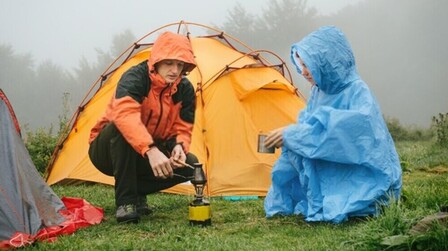For those who love traveling or outdoor activities or simply just want to save the best moments with friends and family, a compact digital camera is a worthy investment. You don't have to spend too much on it though.
Here are the best budget compact cameras (Apr 2024 Update):
- Best Overall: Sony Alpha a6000 Mirrorless Digital Camera
- Best For Skiing: Olympus Tough TG-6 Waterproof Camera
- 40x Zoom: Canon PowerShot SX740 Digital Camera
- Best For Landscape: Sony DSCHX80 Point Shoot Camera
- Best For Low Light Condition: Canon PowerShot G9 X Mark II Camera
- Best For Hiking: PANASONIC LUMIX LX10 4K Digital Camera
| 6 Best Budget Compact Cameras | ||
|---|---|---|
Best Overall | Sony Alpha a6000 Mirrorless Digital Camera | |
Best For Skiing | Olympus Tough TG-6 Waterproof Camera | |
40x Zoom | Canon PowerShot SX740 Digital Camera | |
Best For Landscape | Sony DSCHX80 Point Shoot Camera | |
Best For Low Light Condition | Canon PowerShot G9 X Mark II Camera | |
Best For Hiking | PANASONIC LUMIX LX10 4K Digital Camera | |
Best Overall: Sony Alpha a6000 Mirrorless Digital Camera

- Mirrorless camera with kit lens
- Hybrid AF with 3-inch tilting LCD
- Shutter speed from 1/4000s to 30s
- Handle low-light conditions well
- Comes with a decent kit lens
- Higher price & hard to use
Sony Alpha a6000 is a mirrorless camera. Although mirrorless cameras cannot be compared with DSLR cameras, there are more and more people (and even pros) prefer a mirrorless camera because it is very compact and the image quality is not so far behind a thousand-dollar DSLR camera. Moreover, it’s pretty easy to upgrade a mirrorless camera - just with a pro lens. A mirrorless camera is definitely better than point-and-shoot cameras in every photography aspect.
Sony Alpha a6000 has a high resolution of 24.3 MP. The included kit lens is pretty good. It is a crop lens with focal length from 16-50mm, which is suitable for daily shooting needs, from landscapes to portraits. The max aperture is 3.5 and the max ISO is 51,200, so this camera handles low-light conditions super well. However, it starts to show some noise when you adjust the ISO up to 400. The shutter speed is from 1/4000s to 30s. At the fastest speed, you are able to capture a flying bee sharply. At the lowest speed, you can enjoy long-exposure photographs.
There are two main drawbacks of the Sony Alpha a6000. The first one is that it has a higher price than other point-and-shoot cameras on this list. The second one is that as a semi-pro camera, it is pretty hard to use. You’ll need to learn what aperture, shutter speed, and ISO are, then you have to practice shooting with it a lot - don’t just buy a mirrorless camera and use it in the auto mode, which is a waste of money. If you just want an easy-to-use and more-affordable camera, you can have a look at the other five point-and-shoot cameras below.
| Sony Alpha a6000 Mirrorless Digital Camera Specifications | |
|---|---|
Weight | 0.76 lbs |
Dimension | 4.72 x 1.77 x 2.64 inches |
Optical Sensor Resolution | 24.3 MP |
Kit lens | Focal length: 16-50mm (crop); Zoom: 3.13x |
Max Aperture | F/3.5 (kit lens) |
Shutter | 1/4000 - 30 sec |
ISO | 100 - 25,600 (expandable to 51,200) |
Highlight Features | 3-inch tilting LCD; Shoulder strap; Eyepiece cup |
Sony Alpha a6000 captures magnificent photos, from portraits to landscapes.
Best For Skiing: Olympus Tough TG-6 Waterproof Camera

- Waterproof, freeze-proof, fog-proof
- 4 macro shooting modes
- 5 underwater shooting modes
- 4K ultra HD movie
- Great battery life
- The aperture choices are limited
Olympus Tough TG-6 is a tough camera. It is water-proof, freeze-proof, fog-proof; moreover, it is dust-proof, shock-proof, and crush-proof. With these qualities, this is the ideal camera to bring with you when you are on an adventure trip, go sailing, or go skiing.
Olympus Tough TG-6 has 4 macro shooting modes that let you shoot as close as 1 cm from the front of the lens. The maximum display magnification is 44 times in microscope control mode. You can also capture photos underwater with 5 underwater shooting modes.
In terms of image quality, the camera has a fair resolution - 12MP, which is not so high but would be enough to capture your memorable moments. The image can be zoomed up to 4 times. You can also record videos up to 4K Ultra HD. Moreover, the included battery has a great runtime - it allows you to capture up to 340 images or 29 minutes of continuous recording.
The aperture choices are limited. You’ll have only three options - 2.0, 2.8, and 8.0. However, these choices would be enough for general photographing purposes.
| Olympus Tough TG-6 Waterproof Camera Specifications | |
|---|---|
Weight | 0.56 lbs |
Dimension | 2.60 x 4.40 x 1.30 inches |
Optical Sensor Resolution | 12 MP |
Lens | Focal length: 25-100mm equivalent; Zoom: 4x |
Max Aperture | F/2 |
Shutter | 1/2000 - 4 sec |
ISO | 100 - 12,800 |
Highlight Features | Waterproof, freeze-proof, fog-proof |
Olympus Tough TG-6 is a tough camera, ideal for adventure/sailing/skiing trips.
40x Zoom: Canon PowerShot SX740 Digital Camera

- Powerful 40x Optical Zoom
- Optical Image Stabilizer
- 4K Video and 4K Time-lapse Movie
- High-speed Continuous Shooting
- 3-inch tilt LCD
- Does not handle low-light conditions well
Canon PowerShot SX740 features an insane zoom-ability, up to 40 times. This magnification power allows you to capture a scene or an object from very far away. With Canon’s Image Stabilizer technology, Dual Sensing IS, and Zoom Framing Assist, any unwanted shake from accidental movement will be corrected to give you sharp and clear images. You can use a tripod to use up this magnification power.
Canon PowerShot SX740 has a good resolution - 20.3 MP. It shoots sharp and vivid photos. With a pretty fast shutter speed - 1/3200s, the camera is able to shoot up to 7.4 photos per second (up to 10.0 fps with Auto-Focus Lock). In terms of video recording, the video resolution is up to 4K; moreover, the camera has a time-lapse video recording mode.
Although Canon PowerShot SX740 shoots terrific photos in daylight, it does not handle low-light conditions very well.
| Canon PowerShot SX740 Digital Camera Specifications | |
|---|---|
Weight | 0.61 lbs |
Dimension | 1.60 x 4.30 x 2.50 inches |
Optical Sensor Resolution | 20.3 megapixels |
Lens | Focal length: 24-960mm equivalent; Zoom: 40x |
Max Aperture | F/3.3 |
Shutter | 1/3200 - 15 sec |
ISO | 100 - 3,200 |
Highlight Features | 3-inch tilt LCD |
Canon PowerShot SX740 shoots terrific photos in daylight with 40x magnification power.
Best For Landscape: Sony DSCHX80 Point Shoot Camera

- Pop-up electronic viewfinder
- 30x optical zoom ZEISS lens
- 5-axis image stabilization
- Multi-angle 3-in LCD
- P/A/S/M modes & customizable settings
- Auto Focus is not so sensitive
Sony DSCHX80 is a good choice for shooting landscapes. It features a 30x optical zoom lens so you can capture subjects at a far distance. The 5-axis image stabilization and Sony's frame-analysis technology reduces blur, allowing you to record moving subjects. Although the resolution is not so high, the image quality is great with sharp details and colors.
Sony DSCHX80 features a pop-up viewfinder, which is useful when you want to shoot photos on a bright day and the glare on the LCD makes it impossible to see how your picture is going to come out. The camera has the ability to captures pictures up to 10 fps. However, the auto focus is a minor drawback as it does not seem to be so sensitive.
| Sony DSCHX80 Point Shoot Camera Specifications | |
|---|---|
Weight | 1.1 lbs |
Dimension | 6.3 x 5.0 x 2.8 inches |
Optical Sensor Resolution | 18.2 MP |
Kit lens | Focal length: 24-720mm equivalent; Zoom: 30x |
Max Aperture | 3.5 |
Shutter | 1/2000 - 30 sec |
ISO | 80 - 12,800 |
Highlight Features | Multi-angle 3-in LCD |
Sony DSCHX80 with a built-in viewfinder and 30x optical zoom lens is ideal for landscape.
Best For Low Light Condition: Canon PowerShot G9 X Mark II Camera

- Superior low light shots
- DIGIC 7 Image Processor
- Built-in Bluetooth technology
- Time-Lapse Movie function
- Auto/Fine details/Monochrome/Portrait
- The zoom is not so impressive
Canon PowerShot G9 X Mark II is the pick for those who regularly shot photos in low-light conditions. It features the DIGIC 7 Image Processor to reduce noise effectively when you set the ISO up in low-light conditions. So you’ll get sharp, detailed images in any lighting situation.
Other features on Canon PowerShot G9 X Mark II are also good. It has a time-lapse movie function, so you can record interesting footage. You’ll be able to choose from Auto/Fine details/Monochrome/Portrait modes. Moreover, the built-in Bluetooth technology works pretty well, which allows you to send pictures and images immediately to your phone and continue to shot photos without worrying about being full of memory.
However, the zoom function is not so impressive, which only allows you to zoom in 3 times larger.
| Canon PowerShot G9 X Mark II Camera Specifications | |
|---|---|
Weight | 0.5 lbs |
Dimension | 1.2 x 3.9 x 2.3 inches |
Optical Sensor Resolution | 20.1 MP |
Kit lens | Focal length: 28-84mm equivalent; Zoom: 3x |
Max Aperture | 2.0 |
Shutter | 1/2000 - 30 sec |
ISO | 125 - 12,800 |
Highlight Features | Touch screen panel; DIGIC 7 Image Processor; Built-in Bluetooth |
Canon PowerShot G9 X Mark II is the choice for superior low light shots.
Best For Hiking: PANASONIC LUMIX LX10 4K Digital Camera

- Impressive aperture, shutter speed, and ISO
- Great image processor for brighter and realistic photos
- Ultra-High-Speed Focusing
- Touch tilting 3-inch LCD
- Lens-mounted control ring
- This is over-priced
Panasonic LX10 is a very famous point-and-shoot camera; however, for me, it is a bit over-rated and over-priced. It is still a good camera though, especially for hiking thanks to the impressive specs. The camera features a great bright lens, which works great in low-light conditions as well. The resolution is high 20.1 MP. The max aperture is unbeatable - f/1.4, at this setting, you are able to capture beautiful night scenes and portraits. The shortest shutter speed is 1/16,000, allowing you to capture any fast-moving speed sharply. The ISO is up to 25,600, which I don’t think you’ll use it frequently, but nevertheless, a great function in some cases.
Panasonic LX10 features a great image processor for brighter and realistic photos. The focus is super fast. The 3-inch touch screen is tilting for selfies. Moreover, it has a lens-mounted control ring, offering you the feeling of using a DSLR in a compact point-and-shoot body.
| PANASONIC LUMIX LX10 4K Digital Camera Specifications | |
|---|---|
Weight | 0.7 lbs |
Dimension | 1.7 x 4.2 x 2.4 inches |
Optical Sensor Resolution | 20.1 MP |
Kit lens | Focal length: 24-72mm equivalent; Zoom: 3x |
Max Aperture | 1.4 |
Shutter | 1/16,000 - 60 sec |
ISO | 80 - 25,600 |
Highlight Features | Touch tilting 3-inch LCD; Lens-mounted control ring |
Panasonic LX10 gives you the feeling of using a DSLR in a compact point-and-shoot body.
How To Choose The Best Budget Compact Camera?
First, you need to have some ideas about how a mirrorless camera is different from a point-and-shot camera. When it comes to point-and-shoot cameras, you won’t be able to change the lens, you also don’t have so many options of shooting. As its name, just point and shot. In contrast, a mirrorless camera is a compact version of DSLRs. It features an interchangeable lens system, so you can change to a different lens to fit the need of shooting. For example, a lens for taking portraits is totally different for astrophotography. However, a mirrorless camera is much more expensive and requires much more skills to use than a point-and-shoot camera.
If you are a novice photographer who just simply want to take pictures, a point-and-shoot camera is a good choice. If you want to become a skilled photographer, a mirrorless camera is a good start. The first camera above (Sony Alpha a6000) is a mirrorless camera, while the others are point-and-shoot cameras.
Regardless of camera types, here are some specs you need to know:
- Sensor resolution: Sensor resolution refers to the size of the images that the camera captures. For example, a resolution of 20 MP means that the captured image has 20 million pixels. The higher the resolution is, the more detailed and sharp the images are.
- The ability to zoom: Some cameras allow you to zoom in three times bigger. Some cameras allow you to zoom in 40 times bigger! Normally, you don’t need 40x zoom; a camera with 3 or 4x zoom is sufficient.
- Shutter speed: This is the time that the camera lets the light to come in. To capture a sharp, non-blur photo, you should set the shutter speed to low. To capture a smooth or long-exposure photo, you should set the shutter speed to high. The shutter speed also affects the brightness of the images.
- Aperture: This is the opening space of the lens. For bokeh effet, set the aperture to the minimum. To add depth to your photos, set the aperture to the maximum. The aperture also affects the brightness of the images.
- ISO: ISO refers to the brightness of the image you are going to take. If you double the ISO, the brightness of the image would be doubled.
Which Brands Make The Best Budget Compact Camera?
Sony
Sony is a multi-national brand of electronics. It was founded in 1946, in Japan. At present, Sony is one of the largest manufacturers of consumer and professional electronic products. Cameras are one of their main product lines that have created Sony’s worldwide reputation.
Canon
Canon is another Japanese brand. It was founded in 1937. This is also one of the biggest brands in the camera industry. Canon and Sony are two old rival brands, who always compete for the first spot.
Olympus
In terms of reputation, Olympus cannot be compared with Sony or Canon. However, Olympus’s digital cameras have their own advantages. When it comes to Olympus, compactness, impressive shuttle speed, and image stabilization are three great qualities that must be counted.
FAQs
Is a compact camera the right type of travel camera for you?
Except for travel photography, you probably don’t want to bring a full-frame DSLR camera along when traveling. A compact camera is much more portable. Moreover, you don’t have to worry about carrying a multi-thousands dollar, bulky, vulnerable-to-impact DSLR around.
Are point and shoot cameras better than phone cameras?
Point and shoot cameras have a bigger sensor, better stabilization, better control, and higher-speed continuous shooting.
Are compact cameras as good as DSLR?
No compact camera can be compared with a DSLR in terms of image quality and shooting ability. However, when it comes to portability, that's a totally different story.
Are budget compact cameras best for photography?
Novice photographers should start with a budget compact camera. You have to learn about the basics before getting your hand on a DLSR camera. While a budget compact camera is not the best choice for photography, it is the best choice for beginners or those who just want to take pictures of their meaningful moments.
Are more expensive compact cameras better?
More expensive compact cameras tend to have better sensors, so producing better picture quality. However, if you are not photography enthusiastic, you won't notice the differences.
Conclusion
A compact digital camera is a worthy investment. You don’t have to spend too much on a decent camera. Above are some good compact digital cameras at a reasonable price. I hope this review can you help choose a camera that suits your needs.
 Bryan Listor
Bryan Listor